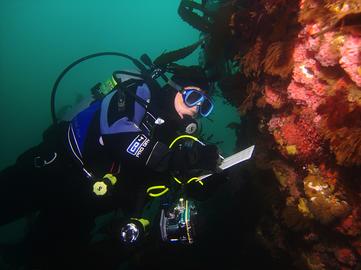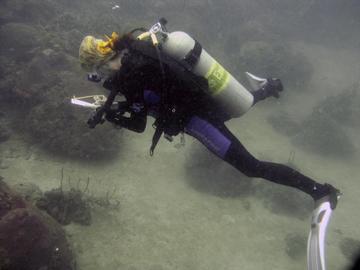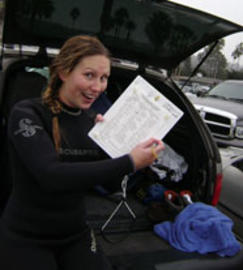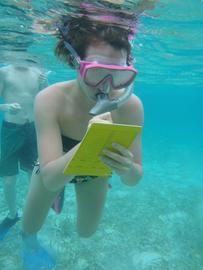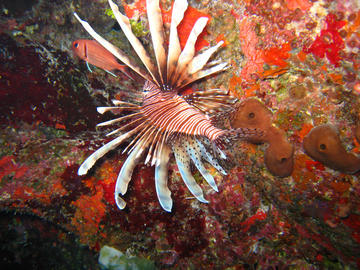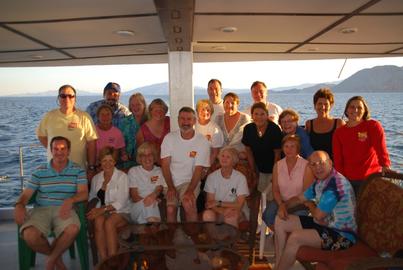Author: Christy Pattengill-Semmens, Ph.D., Director of Science
Every month, scientists, government agencies, and other groups request raw data from REEF’s Fish Survey Project database. Here is a sampling of who has asked for REEF data recently and what they are using it for:
-Researchers used data on yelloweye rockfish frequency of occurrence in the San Juan Islands in Washington to evaluate population status for the San Juan County Community Development and Planning Department.
- The Tunicate Response Action Committee (TRAC) in Washington State evaluated data on three invasive tunicates that are included REEF's Pacific Northwest program.
- A scientist from Florida Fish and Wildlife requested data on yellowtail snapper populations in the Southeastern US to conduct analyses for a stock assessment.
Author: Sasha Medlen, REEF Membership Coordinator
REEF members are at the heart of our grassroots marine conservation programs. Over 43,000 divers, snorkelers, students, and armchair naturalists stand behind our mission.
This month we highlight Itziar Aretxaga (REEF member since 2003). Itziar has conducted 263 REEF surveys in three REEF regions, and she is a member of the Advanced Assessment Team in the Tropical Western Atlantic. Here's what Itziar had to say about REEF:
When and how did you first volunteer with REEF?
Shortly after I got my C-card I started looking for a good reference book on fish. I was fortunate to find Paul Humann and Ned DeLoach´s reef guides, and there I read about the REEF program and how one could volunteer. I joined and started identifying species and reporting them to REEF on my own. A year later I met Lad Akins in a course he gave to volunteers in the Veracruz National Park, and he taught me a few tricks that improved my identification skills. He has been a great mentor in all my fish watching activities ever since.
What inspires you to complete REEF surveys?
I often look at the online database to check what I might be missing, and the only way of improving it is for each of us to submit our surveys, even if that means clicking on the box for Yellowtail Snappers over and over again. I keep telling myself that I hope I will never see the day when I miss them because they are no longer there. I also take special pride when our data are used in scientific publications or management reports. It might be a mere dot in a plot, but collectively we contribute to the growth of knowledge on marine life and conservation.
Do you dive close to where you live? What is the best part about diving there?
I have done over 200 surveys in Veracruz and I know it well enough now that I can recognize changes. I enjoy noticing the unusual species, species off-season, and it is really thrilling when I get to report a new species. There is also the challenge of spotting fish that others have reported that I have yet to see, so the fun continues.
What is your most memorable fish find?
The first Smooth Trunkfish in golden variation I saw in Veracruz, and the first time it was reported outside the Northern Gulf of Mexico by REEF members. I was so excited when I saw it that I started dancing underwater, quite literally. The staff in our local diving shop told me afterwards they were not that unusual in the area. It was just that nobody had reported them before.
What is your favorite part about being a REEF member?
I like sharing with others the fun of it. I usually take surveys during commercial diving boat trips, and people are curious about those slates that I take underwater and keep scribbling on. It is great to see some of them then turn to my book, and start calling each other to show what they themselves have seen.
Author: Janna Nichols, REEF Outreach Coordinator
REEF is proud to partner with over 130 dive shops, dive clubs, individuals, and other organizations as REEF Field Stations
This month we feature San Diego Oceans Foundation (SDOF), an organization that promotes ocean stewardship by leading community-supported projects that enhance the ocean habitat and encourage sustainable use of the oceans resources. SDOF took on REEF as one of its core projects in 2003. SDOF offers REEF training classes and organizes survey dives; they also host a Great Annual Fish Count (GAFC) event each year. SDOF occasionally hosts other special opportunities for its REEF surveyors, including special tours at Sea World and of the collections department at Scripps Institution of Oceanography, and'Aqua-Talk' sessions, where REEFers can learn more about some aspect of the marine environment.
One of SDOF's lead REEF supporters and teachers, Herb Gruenhagen, explains why REEF works so well as an SDOF program - "Our volunteers become ocean stewards and begin personalizing their commitment to the sea. Then the magic happens! We've hooked them (not literally) and that's how we spread our message of ocean stewardship. So many divers see something while underwater and ask each other 'Did you see that?' or 'What do you think that was?' Conducting REEF surveys helps our local divers and snorkelers learn the identification of the fish and invertebrate species that call Southern California ‘home’. The REEF method is easy to do, and Southern California has many diverse fishes and invertebrates that are easy to ID and count." Herb goes on to say, "By teaching the classes, I learn a great deal more than any of my students and that makes my diving that much more enjoyable. I hope to keep on inspiring others to 'count fishes'." When asked about some of his favorite finds as a REEF surveyor, Herb mentioned the Speckled Fin midshipman that he found at a site in La Jolla Canyon called 'Secret Garden', and that he now can distinguish between a Southern Spearnose Poacher and a Pygmy Poacher (now how exciting is that?).
Author: Karl Machado, High School Biology Teacher
We live in a small town called Nelson, in the mountains of British Columbia about 3 hours north of Spokane Washington. In the Fall I decided to take students to Belize to study reef systems and how they may be changing. The course is called "Coral Reef Studies in Belize " and 15 grade 11 & 12 high school students from LV Rogers Secondary signed up for the trip with the help of Island Expeditions from Vancouver. When I was researching the course objectives I came across REEF and realized it would be perfect to help us study the fish species that reside on reefs and indirectly gauge reef health. I also wanted students to be involved with some sort of real biological studies and contribute to science. When I first asked my "academic" students how many reef fish they knew the combined class came up with 5, with 2 species coming from the movie Nemo....
We used REEF website to get us acquainted with common fish ID and used the book series by Paul Humann for more in-depth work. By being able to download from the REEF website the highest frequency fish from exactly the area we were going everyone was motivated to learn. One assignment was to create a Fish ID tablet of Lighthouse and Half Moon Caye. One student created such a professional one that we laminated it and donated it the Belize Audubon society on the atoll for other amateur divers to use.
It amazed me that one day we were in snow to our knees and the next day kids were IDing fish and observing fish behviors on their first dive. From recognizing a measly 5 fish to closer to 50-70 species happened in just a few weeks, especially by using the quizzes on REEF.org. We worked with the Belize Audubon society and did surveys at some of their sites and everyone was really charged to complete and submit surveys..I was amazed that they even started to correct me daily on ID.
Author: Alecia Adamson, REEF Field Operations Coordinator
Changing Seas, an original production of Miami’s public television station WPBT2, will host a live online screening event of Alien Invaders, the series’ latest episode focusing on the lionfish invasion in the Caribbean and Western Atlantic. Alien Invaders will be screened live on the Changing Seas website (www.changingseas.tv/webcast) on Thursday, June 2nd at 7:30 p.m. EST. During the screening, dive enthusiasts will have the opportunity to join an online chat with producers and the experts featured in the program. REEF's Lad Akins and researcher Stephanie Green will be be online to answer questions live during the event.
Author: REEF Staff
We are pleased to announce the 2012 REEF Field Survey trip schedule - check it out online at www.REEF.org/trips. We have an exciting lineup of destinations planned and we hope you will join us. These trips offer a great introduction to fish identification for novice fishwatchers, and are a fun way for experienced surveyors to build their life list while interacting with fellow fishwatchers. REEF staff, board members, and other REEF instructors lead these trips, and each features daily classroom seminars and a full diving schedule. 2012 destinations include: Nevis, San Blas Islands in Panama, Dominica, Belize, San Salvador in the Bahamas, Sea of Cortez, Hornby Island in British Columbia, Bermuda, the British Virgin Islands, and Cozumel.

